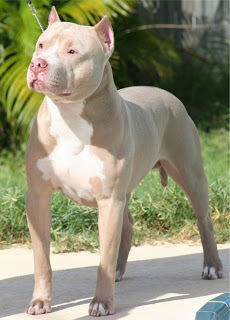This article came to my attention from various sources all claiming it was brand new and exciting information that would change the breed specific legislation.
It is a well written research article presented by The University of Lincoln, a place known for its research into canine behaviour and dog owners.
The study aims to explore the perception of breed specific behaviour in dogs, their is the assumption that people will a more limited contact with dogs will be more likely to accept breed stereotypes that arise from other experience and media portrayal.
There many reasons why an individual dog may have a certain personality, breeding and socialisation are the main reasons I put forward in an argument. More simply nature and nurture will define how a dog, and how a human behaves. But it has been recognised that there is greater variation within a breed then between breeds.
The questionnaire was handed to people in North London, including those in an amateur football club, residents, vets, rescue centre and students at the University of Lincoln. This was to provide a large variation in the responses to the survey.
The results found that respondents that were knowledgeable disagreed 54.4% of the time that some breeds are more aggressive than others, with only 15.3% of non dog experts saying the same thing. Linked with this, a similar percentage of dog knowledgeable people also disagreed that breed specific legislation was valid.
Many of the respondents agreed that physical appearance of the dog type provides reliable information concerning its behaviour. These respondents say dogs as having no role or saw them as pets rather than family members.
The sample size was limited, but enough generalisations could be made to have some statistical significance. As the differences in the small sample size how a large effect, if their was a national survey their would be just as much variation, but it more statistical significance to back up the results.
The crux of their argument is the Contact Hypothesis, which proposes that when an individual comes into contact with another, they are able to understand their differences in culture, prejudices and stereotypes, which should reduce discrimination. This led to the idea that instead of dogs being banned, thus removing people from dogs. Instead of removing people from dogs, instead we should be introducing all people to dogs, teaching them about all breeds, as those with more experience of dogs found no use for the legislation. It hopes to reduce the breed specific ideas that are not founded upon evidence.
Visibal characteristics of the dog were found to generate attitudes in people, creating over-generalisation. Those with heavy muscles and short hair were more often assumed to be more dangerous by people without dog knowledge. It is worth mentioning it was not just bull breeds that were chosen to fit this criteria, other breeds can fit the criteria.
Their is an attraction to certain breeds based on their appearance, this part of the attraction to certain status dogs, creating a self-fulfilling prophecy (A prediction that directly or indirectly causes itself to become true) about their behaviour through nature/environment rather than nature/genetic effects.
 Would the feature of this breed make you think aggression or danger? For many that have no experience with dogs I am sure the answer is yes, but those with experience with the breed would tell you no. They are huge soft lumps, but can be trained to be more aggressive. Experience is involved in everything humans do, including the perception of canine companions.
Would the feature of this breed make you think aggression or danger? For many that have no experience with dogs I am sure the answer is yes, but those with experience with the breed would tell you no. They are huge soft lumps, but can be trained to be more aggressive. Experience is involved in everything humans do, including the perception of canine companions.
Science Daily concluded that Breed Specific Legislation as mentioned in the paper, is not protecting people but lulling them into a false sense of security.
The article can be accessed from the Human-Animal Interaction Bulletin, you need membership to read it but the membership is free. There are also other great articles on it. It is a new bulletin, that should prove to be a useful place to keep up to date with research.
Web page : http://www.apa-hai.org/human-animal-interaction/human-animal-interaction-bulletin/
Science Daily: http://www.sciencedaily.com/releases/2013/12/131202082414.htm



